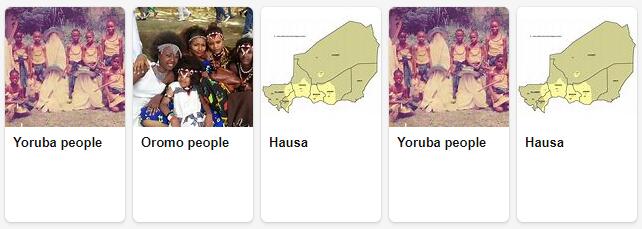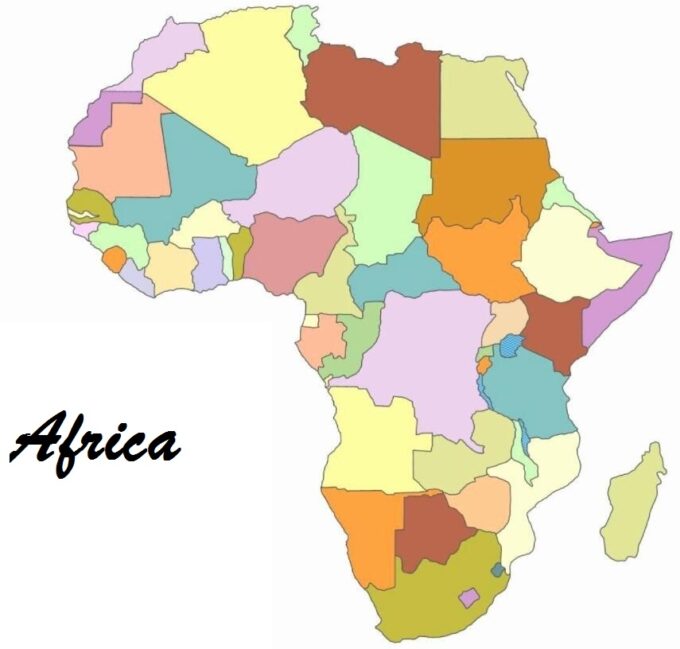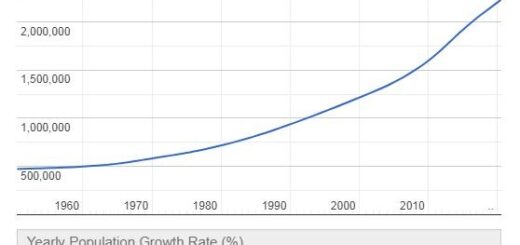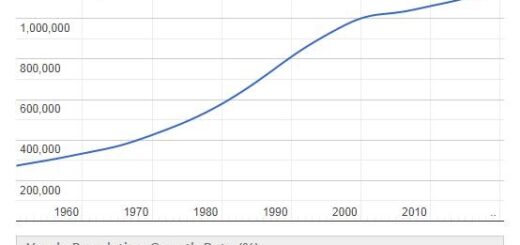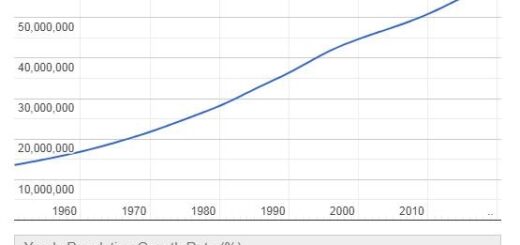Languages in Africa
The language in Africa belongs to many different language families and varies greatly in structure. One expects that there are just over 2000 different African languages. Then dialects are not included.
Linguistic diversity
In the face of the census, Africa is the world part that has the largest linguistic diversity. One possible reason for this is that Africa is a “human being”. In Africa, Homo sapiens originated some 300,000 years ago, in Africa the language must have originated more than 100,000 years ago, and in Africa the language has had a much longer time to divide into different variants than any other city in the world. But on the whole, the linguistic diversity is huge in those parts of the world where people don’t have to travel – or can travel – so far to get everything they need. This applies to tropical and subtropical regions throughout the world – that is, not just Africa, but equally in South and Central America and New Guinea area.
| Country | Percentage of the population with access to toilets (per cent) | Proportion of the population who have access to clean water (percent) |
| Algeria | 87.6 (2017) | 93.5 (2015) |
| Angola | 49.9 (2017) | 41.0 (2015) |
| Benin | 16.5 (2017) | 67.0 (2015) |
| Botswana | 77.3 (2017) | 79.2 (2015) |
| Burkina Faso | 19.4 (2017) | 53.9 (2015) |
| Burundi | 45.8 (2017) | 55.9 (2015) |
| Central African Republic | 25.3 (2016) | 54.1 (2015) |
| Comoros | 35.9 (2017) | 83.7 (2015) |
| Djibouti | 63.6 (2017) | 76.9 (2015) |
| Egypt | 94.2 (2017) | 98.4 (2015) |
| Equatorial Guinea | 66.3 (2017) | 49.6 (2015) |
| Ivory Coast | 32.1 (2017) | 73.1 (2015) |
| Eritrea | 11.9 (2016) | 19.3 (2015) |
| Ethiopia | 7.3 (2017) | 39.1 (2015) |
| Gabon | 47.4 (2017) | 87.5 (2015) |
| Gambia | 39.2 (2017) | 80.1 (2015) |
| Ghana | 18.5 (2017) | 77.8 (2015) |
| Guinea | 22.7 (2017) | 67.4 (2015) |
| Guinea-Bissau | 20.5 (2017) | 69.2 (2015) |
| Cameroon | 39.1 (2017) | 65.3 (2015) |
| Cape Verde | 73.9 (2017) | 86.5 (2015) |
| Kenya | 29.1 (2017) | 58.5 (2015) |
| Congo-Brazzaville | 20.2 (2017) | 68.3 (2015) |
| Congo-Kinshasa | 20.5 (2017) | 41.8 (2015) |
| Lesotho | 42.8 (2017) | 71.6 (2015) |
| Liberia | 17.0 (2017) | 69.9 (2015) |
| Libya | 100.0 (2017) | 96.8 (2015) |
| Madagascar | 10.5 (2017) | 50.6 (2015) |
| Malawi | 26.2 (2017) | 67.2 (2015) |
| Mali | 39.3 (2017) | 74.3 (2015) |
| Morocco | 88.5 (2017) | 83.0 (2015) |
| Mauritania | 48.4 (2017) | 69.6 (2015) |
| Mauritius | 95.5 (2017) | 99.9 (2015) |
| Mozambique | 29.4 (2017) | 47.3 (2015) |
| Namibia | 34.5 (2017) | 78.8 (2015) |
| Niger | 13.6 (2017) | 45.8 (2015) |
| Nigeria | 39.2 (2017) | 67.3 (2015) |
| Rwanda | 66.6 (2017) | 56.7 (2015) |
| São Tomé and Príncipe | 43.0 (2017) | 79.7 (2015) |
| Senegal | 51.5 (2017) | 75.2 (2015) |
| Seychelles | 100.0 (2017) | 96.3 (2015) |
| Sierra Leone | 15.7 (2017) | 58.1 (2015) |
| Somalia | 38.3 (2017) | 40.0 (2015) |
| Sudan | 36.6 (2017) | 58.9 (2015) |
| Swaziland | – | – |
| South Africa | 75.7 (2017) | 84.7 (2015) |
| South Sudan | 11.3 (2017) | 50.4 (2015) |
| Tanzania | 29.9 (2017) | 50.1 (2015) |
| Chad | 8.3 (2017) | 42.5 (2015) |
| Togo | 16.1 (2017) | 62.8 (2015) |
| Tunisia | 90.9 (2017) | 94.2 (2015) |
| Uganda | 18.5 (2017) | 38.9 (2015) |
| Zambia | 26.4 (2017) | 61.2 (2015) |
| Zimbabwe | 36.2 (2017) | 66.6 (2015) |
Source: AllCityCodes
African language families
Since the American linguist Joseph Harold Greenberg in 1963 published the book The languages of Africa, it has been customary to divide the African languages into four main families, as shown below.
The speech on familiar is still highly contentious. Many linguists believe that the basis for operating with just four familiar is deficient, and that a more realistic number lies more than twenty, according to the article language families and language isolate in Africa.
There are some languages in Africa that Greenberg did not include in his classification, because they belong to language families in other parts of the world. In Madagascar, they speak (mada) Gassi, which belongs to the Malayo-Polynesian language of the Austronesian language family. In eastern and southern Africa, indigenous languages such as Hindi and Gujarati are benefited by immigrants from the Indian subcontinent. In southern Africa, the Germanic languages become English and African useful to both European immigrants and people of African descent. Several cities in Africa find people who speak Creole languages. Greenberg also did not use the sign language for the deaf.
The classification of African languages at Greenberg
In 1963, American linguist Joseph Harold Greenberg presented a classification of languages in Africa based on countries listed by Countryaah.com. He divided them into four language families, with some subgroups:
- Congo-Kordofan languages, with two main groups, Kordofan and Niger-Congo languages. He divided the Niger-Congo language into six branches:
- West Atlantic languages, nowadays most commonly called Atlantic languages
- Mande languages
- voltaic languages, nowadays most commonly called gurs
- kwaspråk
- Benue-Congo languages, with the subgroups Plateau languages, Jukunoid languages, Cross River languages and Bantu languages. Between the Bantu languages we find between other Bantu languages.
- Adamawa-Ubangi language, which Greenberg calls Adamawa-Eastern
- Nilo-Saharan languages,with six branches:
- songhai
- Saharan languages
- Mabane language
- fur
- Chari-Nil languages, with four subgroups: Austsudan languages, Central Sudanese languages, berta and kunama
- Afro-Asian languages, with five branches:
- Semitic languages
- Egyptian
- Berber language
- Cushitic languages
- Chad languages
- Khoisans claim, with three branches:
- South African Khoisans, with a northern, central and southern subgroup
- sandawe
- hadza
A more detailed review of the classification of Joseph Harold Greenberg is found in the article Joseph H. Greenberg’s classification of African languages.
Auxiliary languages, official languages and school languages in Africa
Help Language
Due to the large linguistic diversity in Africa, a number of regional aid languages (lingua franca) are being used across language boundaries, peoples groups and national borders. In North Africa, Arabic is most prevalent, in East Africa Swahili and in West Africa the Hausa. Other important auxiliary language is Lingala, fanagalo, Sango, Bambara-maninka, fulfulde, Amharic, Wolof and Congo. Many cities in Africa – among others in parts of Senegal, Mali, Nigeria and Cameroon of – one has to master three languages in order to function in society: the local first language (the mother tongue), the regional auxiliary language and the national official language.
Official languages
In many sub-Saharan countries, the old colonial languages English, French, Portuguese and Spanish are still the only official languages. Unnataka is South Africa, Lesotho, Swaziland, Zimbabwe, Malawi, Zambia, Rwanda, Burundi, Tanzania, Kenya, Uganda, Somalia, Ethiopia and Eritrea, where one or more local languages are official, usually some colony language, and those countries in the north of Africa where Arabic is the only or one of more official languages: Mauritania, Chad, Sudan, Djibouti, Egypt, Libya, Tunisia, Algeria and Morocco. In some states, African languages have official status in state states. One example is Ethiopia, where Amharic is the official language at the national level, while Oromo is the official language of the state of Oromia, Somali is the official language of the state of Sumale, tigrinja is the official language of the state of Tigray and afar is the official language of the state of afar.
Skule Language
It is not uncommon for the old colonial language to be the only language that children learn at school, despite the fact that the children do not speak this language when they begin school – with dramatic consequences. It often takes years before students understand everything that happens in the hour, many have to go years on the same school steps, and many drop out of school.
In the countries where local languages are used in school, this applies with few exceptions to the first years of primary school. In the upper classes in the elementary school and in the upper secondary school, the language of the colony dominates, and in the universities they are almost exclusively monolingual. The widespread lack of textbooks in African languages is an important reason for this situation. In Ethiopia, Amharic is the official language, while all teaching at the University of Addis Ababa (Addis Ababa University) is in English.
Structural features of African languages
African languages do not belong at home to a long line of different language families. These also vary greatly in grammatical and phonological structure.
Grammar
One very widespread grammatical phenomenon in African languages is genus : nouns are divided into two or more groups that required different congruence by different adjectives, speech words and pronouns. In Afro-Asian languages, it is common to have two genders, masculine and feminine. In some khoisans, such as khoekhoe, there are three genus, masculine, feminine and neuter. Languages in all branches of the Niger-Congo family except for the male language has genus, usually between ten and twenty, which differ semantically from one another by contradictions such as human/non-human, countable/non-countable or form. Another typical feature of African languages is that syntactic function is expressed in ways other than the case. Kasus is generally found in Afro-Asian and Saharan languages. In other languages it is usually word order or morphological marking on the verb that shows what is the subject or object of the judge.
Phonology
African languages vary greatly phonologically. While the Berber language allows many consonant groups, as in tashelhit lqiṣt ‘history’, in many bantu languages a consonant must always be followed by a vowel, as in the Zulu isikole ‘school’. Most sub-Saharan languages have tone (word differentiating tone), cf. Hausa bààbá ‘daddy’ and báábà ‘mom, aunt’, whose gravity accent (`) marks low tone and acute accent (´) marks high tone.
African Sign Language
One knows about 27 sign languages that are used by deaf people in African countries, as shown in the list below. In addition, American Sign Language (ASL) and several other non-African sign languages are used in several African languages. Note that Gassian sign language is related to Norwegian Sign Language (NTS).
- Adamorobe sign language, which has been useful in the village of Adamorobe Ghana for about 200 years. Not related to other known sign languages.
- Algerian sign language. Of unknown origin.
- Bamako sign language in Bamako, the capital of Mali. Not related to other known sign languages.
- Bura-sign language. Of unknown origin.
- Egyptian sign language. Of unknown origin.
- Ethiopian sign language. Of unknown origin.
- Gambian sign language. Of unknown origin.
- gassic sign language. Related to Norwegian Sign Language (NTS).
- Ghanaian sign language. Related to American Sign Language (ASL).
- Guinean sign language. Related to American Sign Language (ASL).
- Hausa-sign language. Not related to other known sign languages.
- Kenyan sign language. Of unknown origin.
- Congolese sign language. Of unknown origin.
- Libyan sign language. Of unknown origin.
- Mbour sign language in Senegal. Of unknown origin.
- Moroccan sign language. Of unknown origin.
- Mozambican sign language. Of unknown origin.
- Namibian sign language. Of unknown origin.
- Nigerian sign language. Related to American Sign Language (ASL).
- Sierra Leonean sign language. Of unknown origin.
- South African sign language. Related to British Sign Language (BSL).
- Tanzanian sign language. Not related to other known sign languages.
- Chadian sign language. Of unknown origin.
- Tunisian sign language. Of unknown origin.
- Ugandan sign language. Of unknown origin.
- Zambian sign language. Not related to other known sign languages.
- Zimbabwean sign language. Of unknown origin.

